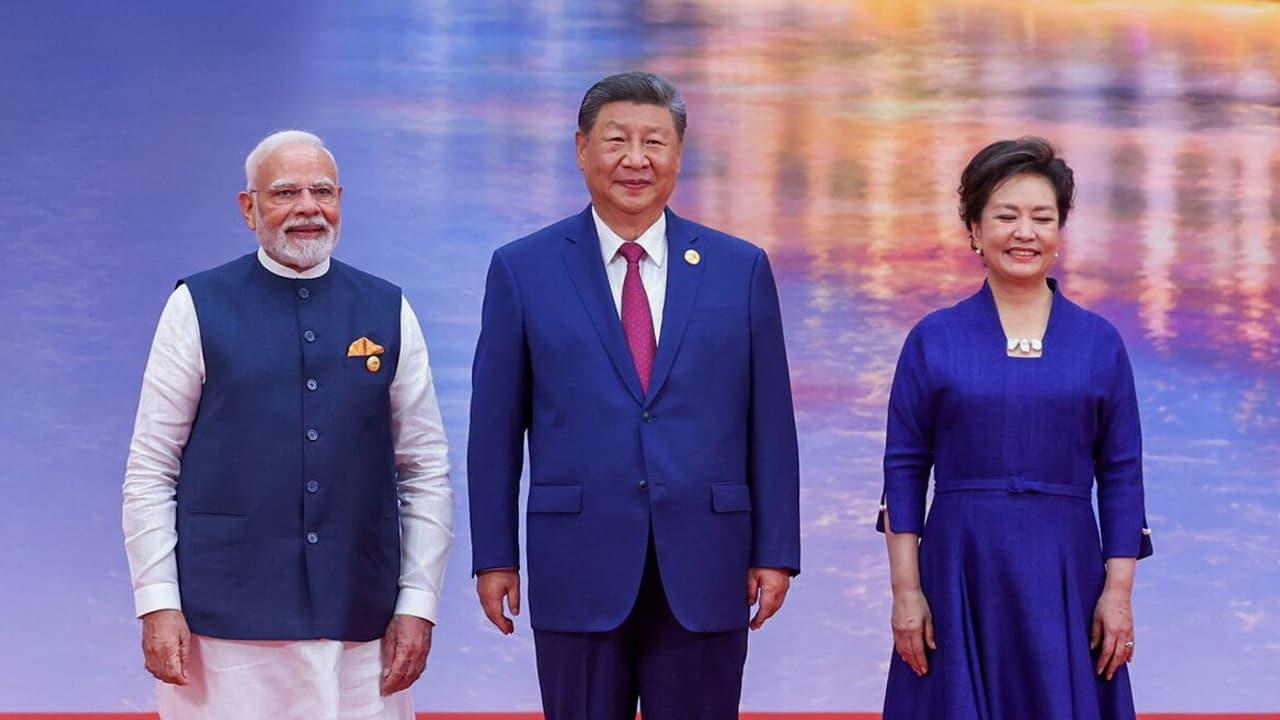Explained: Why India And China's Rapprochement Could Be A Tactical Pause, Not Lasting Strategic Reset
India and China appear to be carefully testing whether a re-opening in ties can move beyond symbolic gestures or remain a temporary pause. The first signals emerged when Chinese Foreign Minister Wang Yi visited New Delhi in early August, marking the highest-level trip since the 2020 Galwan clashes.
This was followed by Prime Minister Narendra Modi's trip to Tianjin for the Shanghai Cooperation Organization (SCO) summit, his first China visit since 2018. Together, these moves suggested that both countries were reopening channels after years of confrontation.
Some early steps toward normalization have been taken. Certain border passes were reopened for trade, direct flights resumed, and hydrological data-sharing restarted. But whether these moves will lead to structured accommodation or prove to be tactical responses to shifting pressures remains uncertain.
U.S. Pressure Shapes India's Strategic Calculus
India's recalibration has been deeply influenced by trade and energy disputes with Washington. In July 2025, the Trump administration imposed 25 percent tariffs on Indian goods, later doubling the rate to 50 percent until New Delhi halted Russian oil imports. The move, treating India more harshly than China despite Beijing's larger energy imports from Moscow, raised concerns in New Delhi about U.S. reliability as a long-term partner.
This unease was compounded earlier in 2025 when Trump claimed to have mediated a ceasefire in the India-Pakistan conflict, a claim India rejected. Washington's decision to host Pakistan's Army Chief Asim Munir at the White House while sharpening rhetoric against India revived old suspicions about America's leanings toward Islamabad.
Together, these developments pushed New Delhi back toward its long-favored“multialignment” approach, reviving engagement with both Russia and China through forums like the SCO.
For Beijing, the timing is also pragmatic. Slowing growth and ongoing tariff battles with Washington make India's market and diplomatic balancing valuable. Engagement with India not only diversifies trade but also complicates U.S. coalition-building efforts in Asia. Xi Jinping's remarks at the SCO summit that border disputes should not define bilateral ties reflected a tactical bid to balance tensions rather than a strategic rethinking.
Cycles of Escalation and Fragile Thaws
India-China relations have long been marked by cycles of conflict and limited accommodation. After the 1962 border war froze ties for decades, normalization only resumed in the 1980s. The 2017 Doklam standoff was followed by the 2018 Wuhan summit, but that reset unraveled quickly with the 2020 Galwan clashes, the first deadly combat along the border in 45 years.
Despite shocks, economic ties remained strong. China continues to be India's largest trade partner, with bilateral trade reaching $118.4 billion in 2023-24. Limited disengagement agreements followed in 2024, including the creation of working groups to manage less contentious areas.
The restoration of flights, visas, and trade passes, along with the Kailash Manasarovar Yatra pilgrimage, represent cautious normalization. Diplomatic engagement also resumed, with Wang Yi's meetings in August 2025 with S. Jaishankar and Ajit Doval, alongside the revival of boundary management talks.
Yet these steps remain tactical. Hydrological data-sharing on the Brahmaputra has resumed, but India remains wary of upstream Chinese projects. Military deployments on both sides of the Line of Actual Control (LAC) remain elevated well beyond pre-2020 levels. After 24 rounds of boundary talks, no convergence on territorial claims has been reached.
Economic interdependence nevertheless gives the re-opening potential weight. India depends heavily on Chinese solar modules and pharmaceutical inputs, while China sees India as both a consumer market and manufacturing hub. Predictability in these flows would benefit smaller Asian economies as well.
In multilateral forums, joint positions in BRICS or the New Development Bank could strengthen bargaining power for developing states. Energy is another sphere of convergence, as both India and China remain major buyers of Russian oil despite sanctions, challenging Western pressure.
But these dividends remain tied to stability at the border. Without progress on territorial disputes, economic or political cooperation will remain vulnerable to sudden reversals.
The Pakistan factor complicates matters further. The May 2025 conflict following the Pahalgam terror attack highlighted Beijing's defense backing for Islamabad, with Chinese platforms and intelligence support playing visible roles. The extension of the China-Pakistan Economic Corridor into POJK territories deepens India's unease.
Strategic competition also extends to hydropower and maritime presence, with China pushing ahead with large-scale projects on the Yarlung Tsangpo and expanding naval reach across the Indian Ocean. India, in turn, has maintained restrictions on Chinese investment and technology.
Domestic politics add another constraint. Indian public opinion remains distrustful of Beijing, while China doubts India's alignment due to the Quad and its outreach to Southeast Asia. The Tibet issue could also resurface. The Dalai Lama's recent remarks on succession challenge Beijing's authority, a reminder that dormant issues can flare suddenly despite broader diplomatic progress.
Legal Disclaimer:
MENAFN provides the
information “as is” without warranty of any kind. We do not accept
any responsibility or liability for the accuracy, content, images,
videos, licenses, completeness, legality, or reliability of the information
contained in this article. If you have any complaints or copyright
issues related to this article, kindly contact the provider above.
Most popular stories
Market Research

- Daytrading Publishes New Study On The Dangers Of AI Tools Used By Traders
- Primexbt Launches Empowering Traders To Succeed Campaign, Leading A New Era Of Trading
- Wallpaper Market Size, Industry Overview, Latest Insights And Forecast 2025-2033
- Excellion Finance Scales Market-Neutral Defi Strategies With Fordefi's MPC Wallet
- ROVR Releases Open Dataset To Power The Future Of Spatial AI, Robotics, And Autonomous Systems
- Ethereum-Based Meme Project Pepeto ($PEPETO) Surges Past $6.5M In Presale






















Comments
No comment